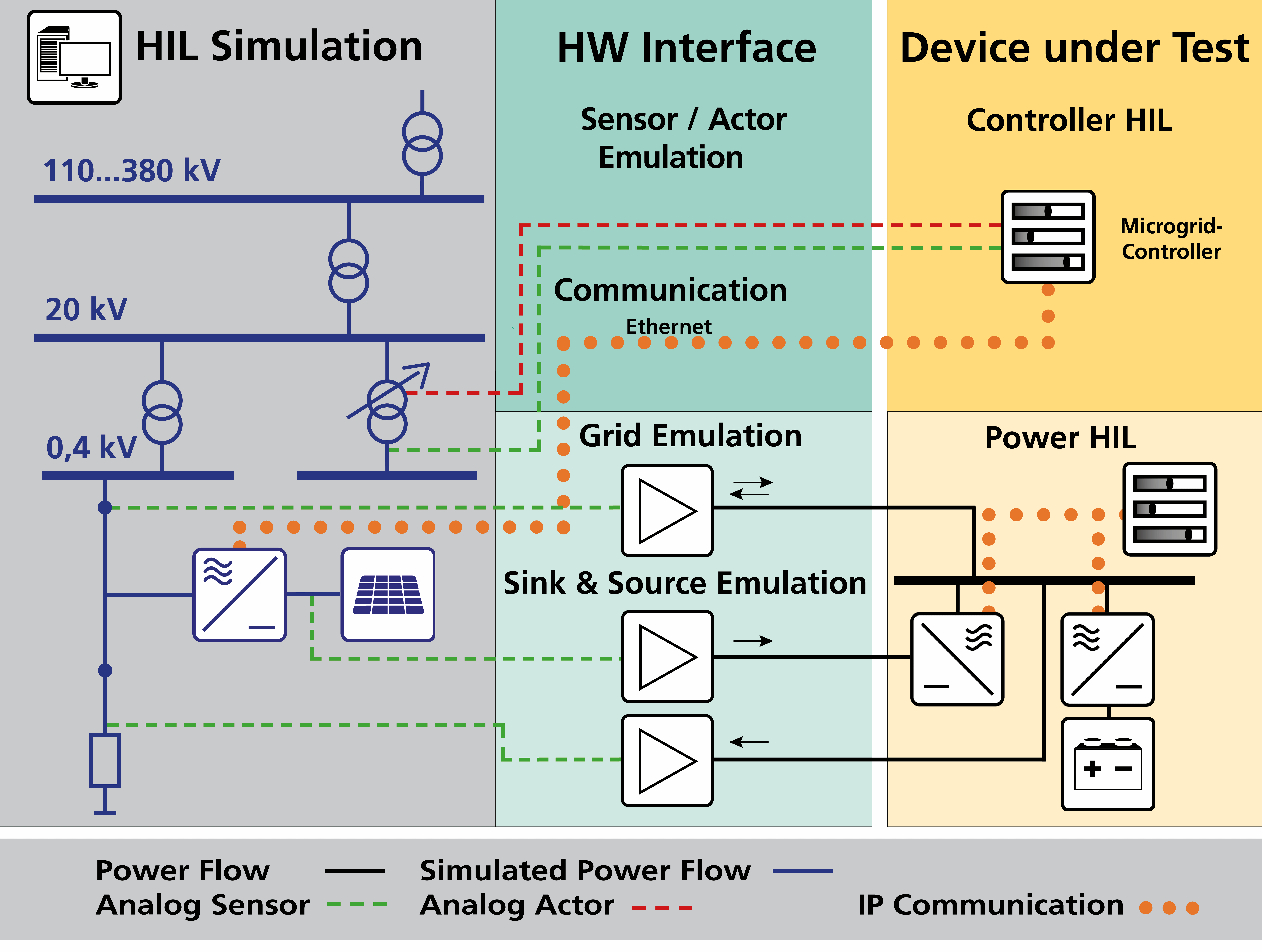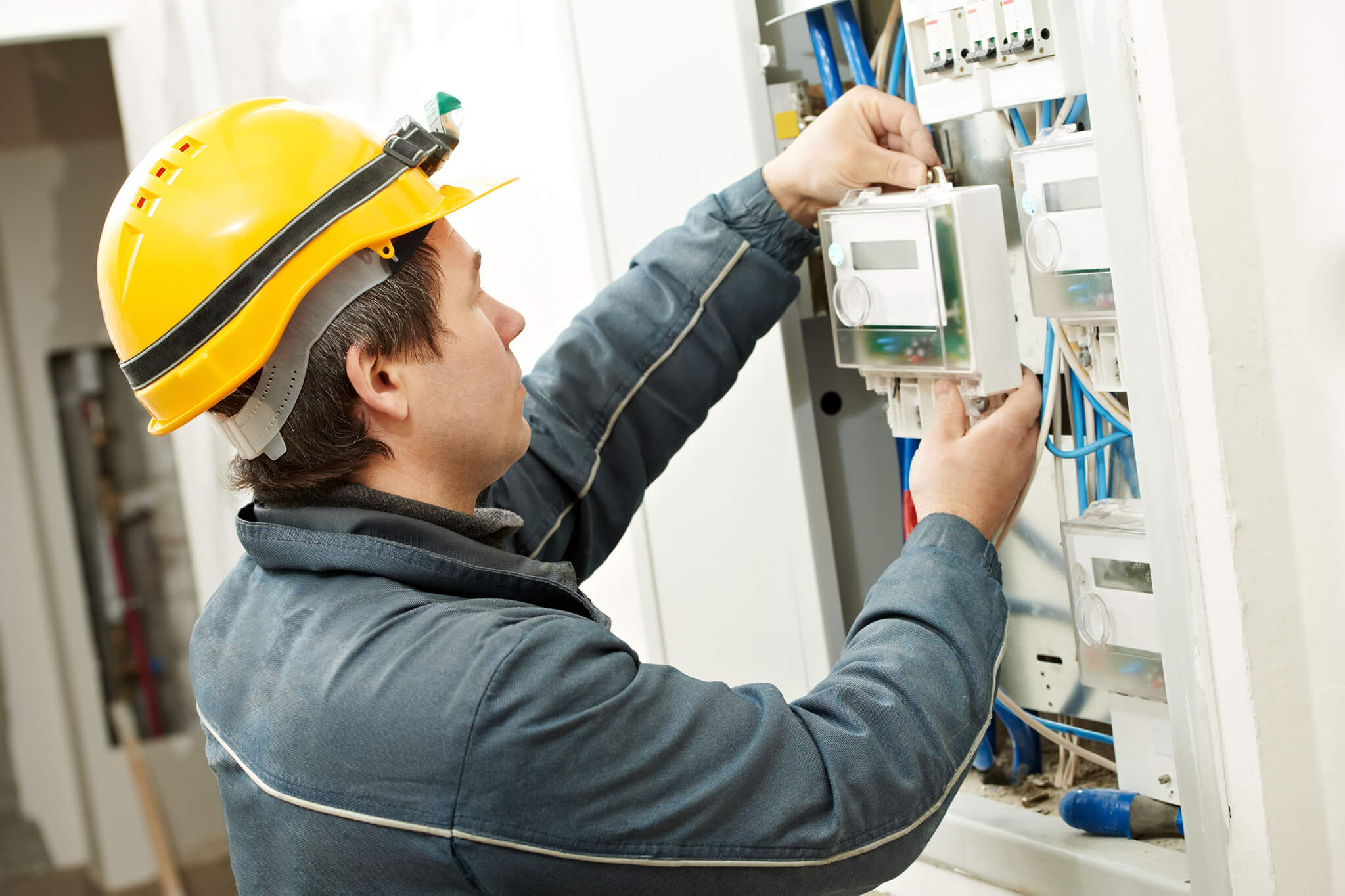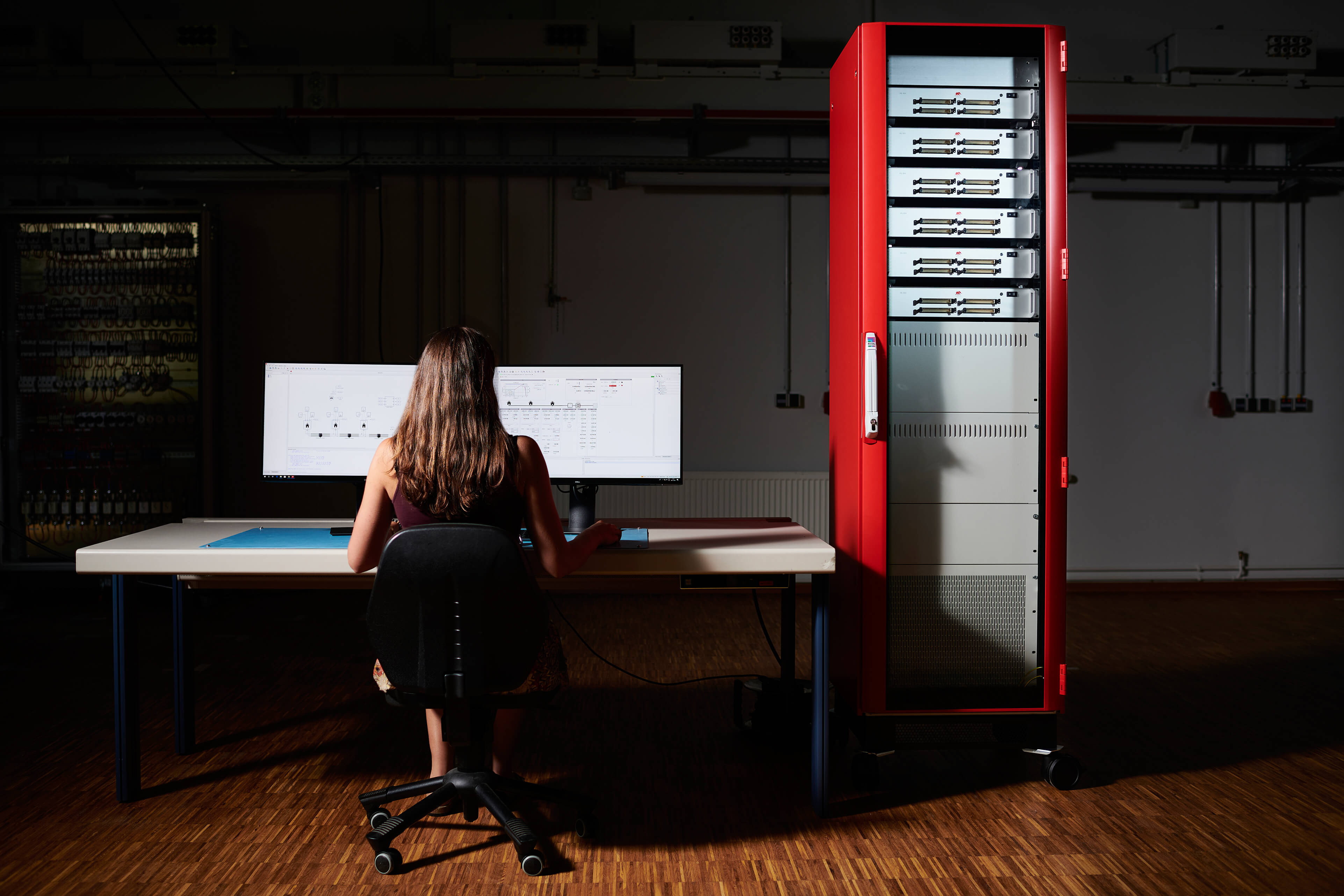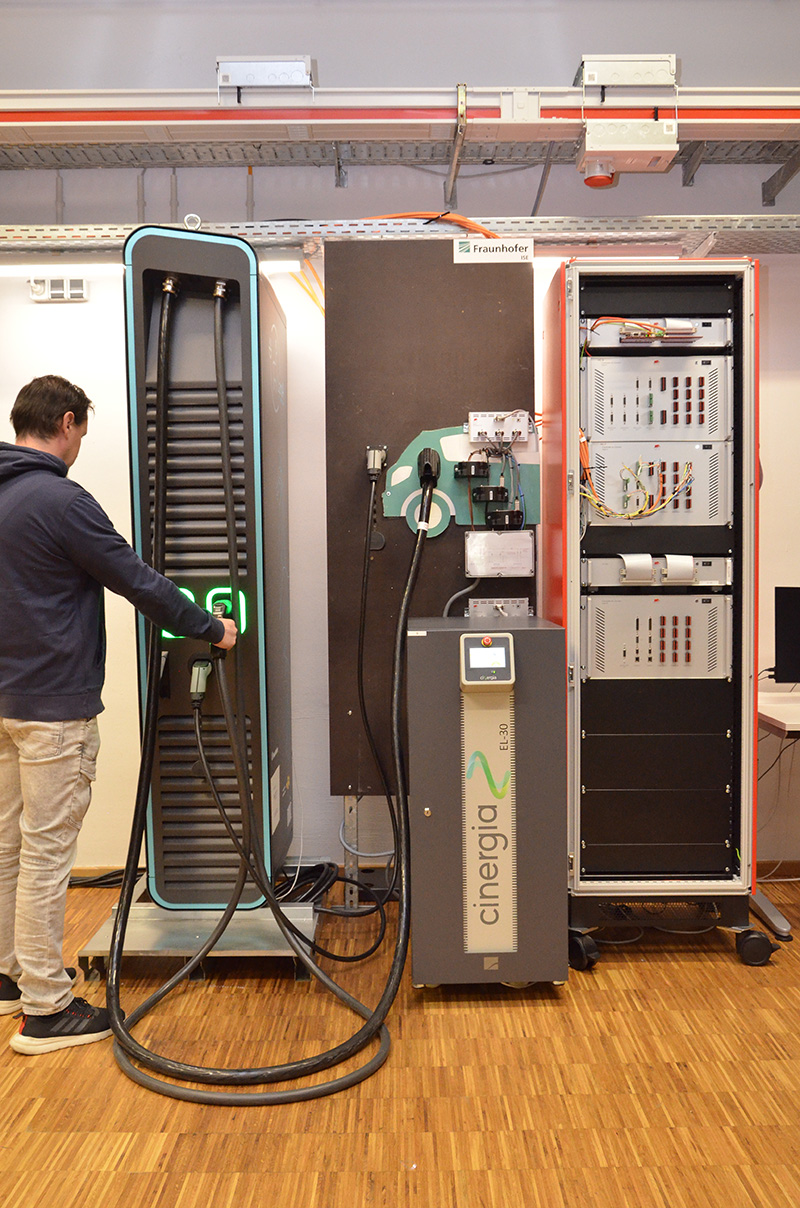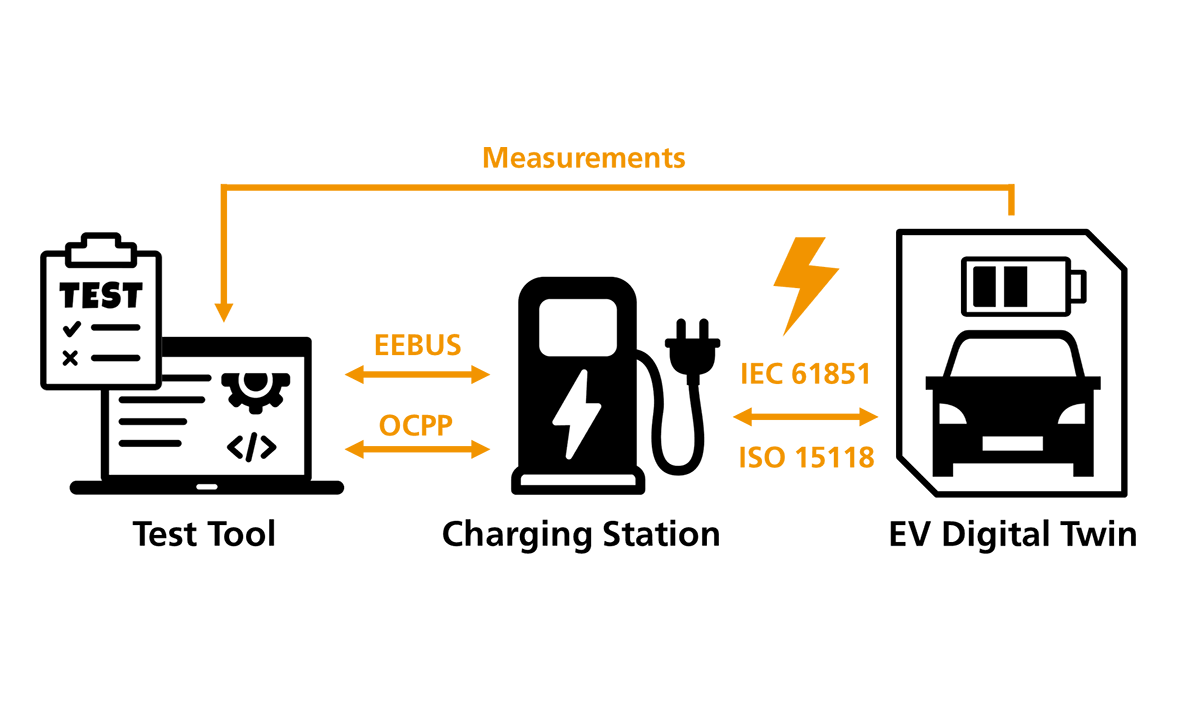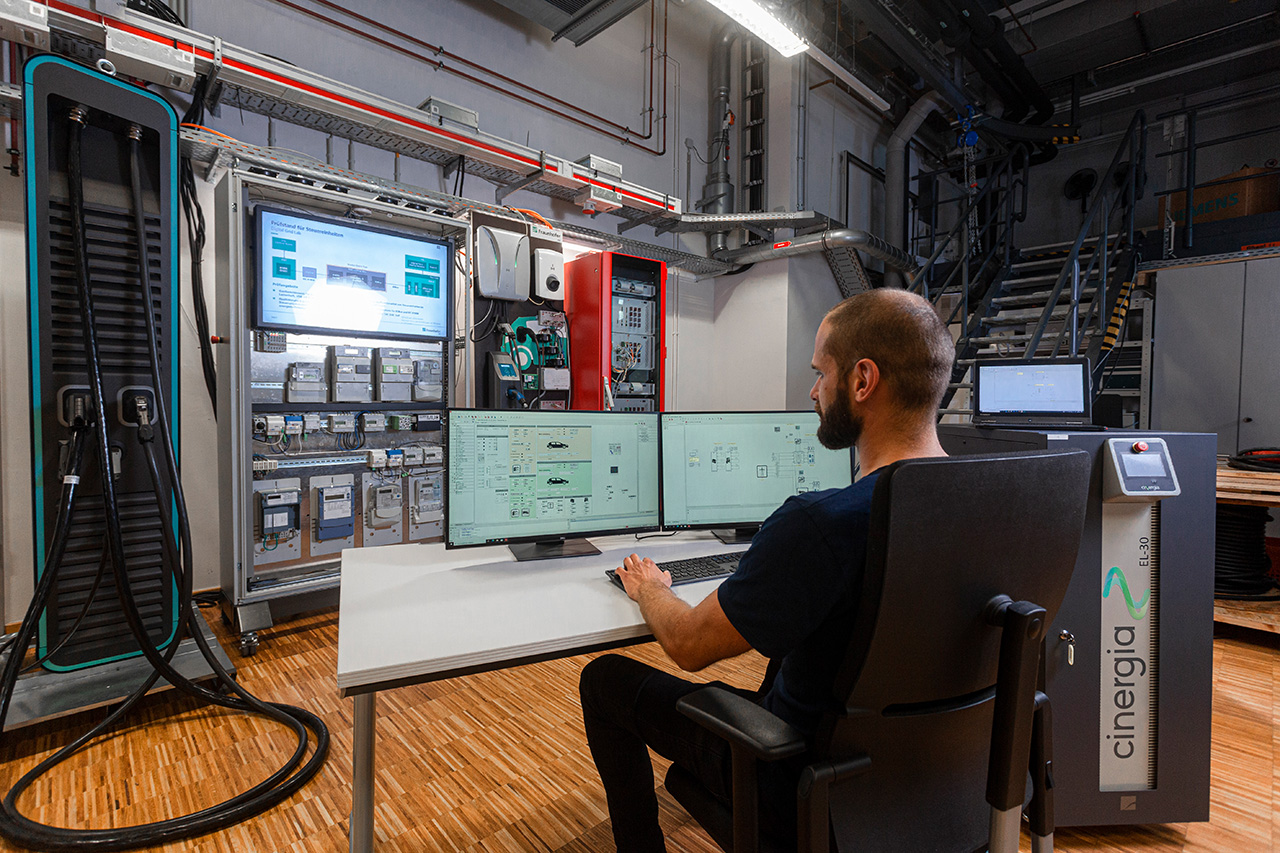The charging infrastructure for electric vehicles has numerous interfaces. In our Digital Grid Lab, we simulate these with our hardware-in-the-loop simulator and evaluate our customers' charging infrastructure with ev twin, our digital twin of an electric vehicle. This emulates the communication between vehicle and charging station according to IEC61851 and ISO15118.
The Open Charge Point Protocol (OCPP) is used across the board as the de facto standard for communication between the charging station and the backend system. An error-free/validated implementation within the charging station is indispensable for a future-proof charging infrastructure.
The current state of development also includes extended test scenarios for bidirectional charging. With the steady expansion of renewable energies and the current low storage possibilities, the use of vehicle batteries for a stable power supply is one of the most important charging infrastructure research topics.
In addition to OCPP, we are also testing EEBUS implementations. The communication protocol is used to interface between smart homes and utilities via smart meter infrastructure to maximize controllability.
In this regard, our laboratory offers tests fully customized to your requirements. We are happy to develop individual test scenarios together with you. After test execution, detailed test reports are available to you, which can be used to easily uncover errors within the implementation.
